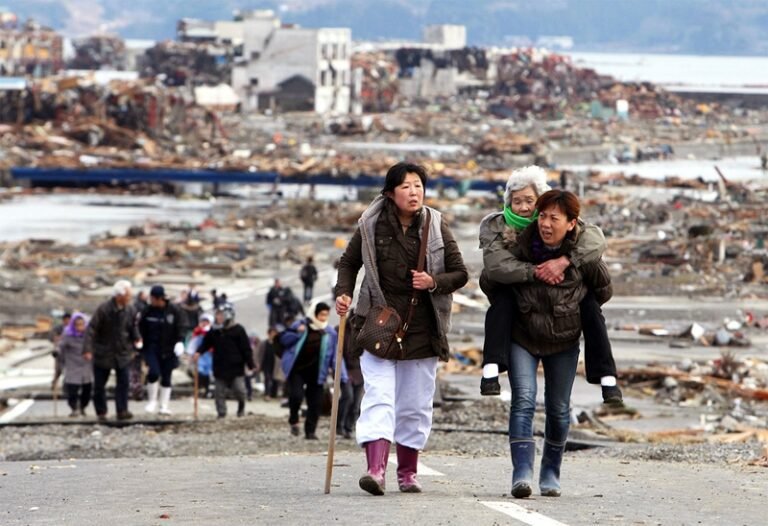Introduction
The earth is a dynamic planet, constantly undergoing geological changes that can often be unpredictable and devastating. On 27 December a powerful earthquake with a magnitude of 6.3 on the Richter scale struck the Kuril Islands in Japan sending shockwaves across the region. This seismic event not only serves as a reminder of how vulnerable our world can be to natural disasters but also highlights Japan’s resilience and preparedness in dealing with such calamities.
Understanding Earthquakes
Earthquakes are caused by the sudden release of energy in the Earth’s crust, resulting in seismic waves that can shake and displace structures on or near its surface. The severity of an earthquake is measured using the Richter scale, which quantifies its magnitude based on recorded ground motion.
The Kuril Islands:
Located between Russia’s Kamchatka Peninsula and Japan’s Hokkaido Island, lies an archipelago known as the Kuril Islands. These islands are situated along what is called “the Ring of Fire,” an area where several tectonic plates converge leading to frequent earthquakes and volcanic activity.
Impact of the Earthquake:
The recent earthquake that struck this remote island chain had significant repercussions for both human life and infrastructure. According to reports, multiple buildings collapsed, roads were damaged or destroyed, and power outages occurred throughout affected areas.
Rescue Operations:
Japan has been recognized worldwide for its effective disaster management strategies due to its high vulnerability to earthquakes. In response to this particular quake, emergency services promptly mobilized teams for search-and-rescue operations while simultaneously ensuring public safety through evacuation measures.
Preparedness Measures:
Over decades of experiencing earthquakes frequently, Japan has developed robust precautionary measures that have saved countless lives during similar catastrophic events. Strict building codes ensure structural integrity against tremors while advanced warning systems provide residents with crucial seconds to take cover.
Role of Technology:
Japan’s technological advancements have significantly contributed to its ability to mitigate the impact of earthquakes. The country has an extensive network of seismometers and sensors that detect seismic activity, enabling rapid response measures. Furthermore, early warning systems like the Japan Meteorological Agency’s Earthquake Early Warning (EEW) system send alerts through various mediums, providing citizens with valuable time to prepare and seek shelter.
Lessons from Past Experiences:
The history of seismic events in Japan has been fraught with devastation but also remarkable recovery efforts. Notably, the 2011 Tohoku earthquake and tsunami were a turning point for disaster management in the country. Lessons learned from that disaster led to improvements in infrastructure resilience, enhanced communication systems, and refined evacuation protocols.
International Cooperation:
Given the global nature of natural disasters such as earthquakes, international cooperation is crucial for effective response and recovery operations. In recent years, Japan has actively shared its knowledge and expertise with other countries vulnerable to similar geological risks. Collaborative efforts include sharing technology advancements as well as training programs aimed at enhancing preparedness worldwide.
Conclusion:
The magnitude 6.3 earthquake that struck the Kuril Islands serves as a stark reminder of our planet ever changing landscape and unpredictable nature. While it caused significant damage to infrastructure on this remote island chain in Japan. It also highlighted the nation remark resilience and preparedness against seismic events.
Japan proactive approach towards disaster management stands out globally due to its stringent building codes. Technologically advanced warning systems efficient rescue operations and continuous improvement based on past experiences. Beyond their domestic efforts Japan engages with other nations promoting international cooperation by sharing vital resources knowledge and training programs. These collaborative initiatives are essential for minimizing loss of life, damage and rebuilding stronger communities across borders when faced with natural calamities like earthquakes. By learning from each other’s experiences, countries can build more resilient societies capable of weathering the unpredictable forces of nature.
Read More:
20VC: The Podcast Shaping the Future of Venture Capital
The Power and Responsibility of Filmmakers: Examining “dpbossreal.com: The Kerala Story”
Box Office Clash: Shah Rukh Khan’s ‘Dunki’ Triumphs over Prabhas’ ‘Salaar’

